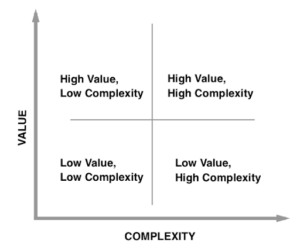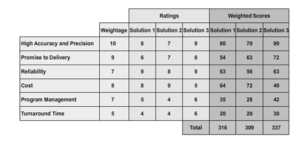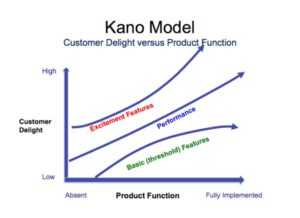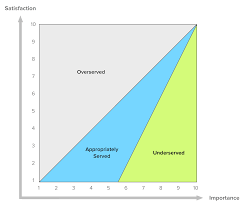

How to prioritize product features when you have a large list of features in pipeline?
With the wide array of product features available to choose from, it can be extremely challenging to prioritize features and road mapping decisions without market research. Product managers and entrepreneurs are often stuck on deciding which prioritization frameworks to use and when. In this article, we’ll see how to effectively prioritize product features using different prioritization frameworks.
The most commonly used prioritization frameworks to prioritize the features in a product include:
Using this model, developers assess each opportunity according to the value it can provide to a business and the ease of implementation. According to this concept, each feature that is being considered will have an innate level of business value that it brings to the product and an associated level of implementation complexity that it presents in delivering it. The final priority of any feature is the composite score of both.
The business value of a feature consists of two components. The first one is the expected benefit derived from the target market and the second is the expected benefit derived by the company.
The implementation complexity of a feature measures how difficult it will be to implement. This is usually expressed in effort (man-hours) or schedule time (weeks or months) for the development effort.

Pros:
Cons:
Let's talk!
This model utilizes numerical scoring to rank strategic initiatives against benefit and cost categories. It can be beneficial for product teams who require objective prioritization techniques that consider multiple layers of data.
This approach helps derive an objective, quantitative business value for each competing item on the list of features. The acquired values can further be used to decide which items should be prioritized on the roadmap.
Pros:
Cons:

In contrast to the weighted scoring approach, which involves assigning quantitative values to each initiative to help make prioritization decisions more objective, the Kano model takes on a much more subjective approach.
This model involves the categorization of potential features into three categories- threshold, performance and excitement. These categories are further weighed according to its necessity versus its ability to delight.
Pros:
Cons:

This is a product prioritization technique that is used to determine the value of a feature or an idea. The product team has to work directly with customers and key stakeholders to acquire feedback and prioritize the features which the participants want or value most. The team will list all the potential features and put a particular price on it. The price is determined according to the estimated cost of development. The customers will be asked to figuratively ‘buy’ the features that appeal to them the most. Some customers will spend all of their money on one feature and others will spend it on multiple features. By analyzing the purchasing behaviour of the customers, a prioritized list of features can be developed.
Pros:
Cons:
Opportunity scoring is a type of Gap Analysis that comes from Outcome-Driven Innovation. Without getting too detailed, the idea is to measure and rank opportunities based on their importance versus customer satisfaction. To conduct opportunity scoring you ask customers to score the importance of each feature and then also score how satisfied they are currently with that feature. Your opportunities are those features that are highly important yet customers gave a low satisfaction score.
This approach is based on the concept that customers buy products and services to get certain jobs done. It focuses on the importance of customer feedback for product development. This feedback is used to reach the required outcomes for a product or feature.
Opportunity scoring involves the use of a satisfaction and importance graph to measure and rank opportunities. After deciding on a list of ideal outcomes, a survey is conducted for the customers to understand which features are most important to the customers, but have low satisfaction scores within your product.
Pros:
Cons:

This works like an activity that can be carried out among the members of the product team. It involves brainstorming ideas for improving the product. They will write down these ideas and then group the similar items together. These groups will be named and finally ranked according to popularity. This will result in a list of prioritized items that can be implemented.
Pros:
Cons:

Through this approach, product teams can map out the workflow of the product from beginning to end. A story map is developed by having a horizontal axis for the user journey and a vertical axis for priority. On completion of the process, various features will be sorted according to the usage sequence and importance.
Pros:
Cons:

Choose from our pool of experienced developers
RICE is an acronym for the four factors we use to evaluate each project idea: reach, impact, confidence and effort. Each feature is scored against all the factors and these individual numbers get turned into one overall score using the following formula:
Reach*impact*confidence/effort= RICE score
The score is used to understand the priority level of each feature.
Pros:
Cons:
This approach helps teams determine what matters the most to their customers by classifying features into four priority buckets. MoSCoW stands for Must-Have, Should-Have, Could-Have, and Won’t-Have features.
Pros:
Cons:
This is an approach that helps teams quantify the economic value of completing a project sooner instead of later. Product teams use this approach to calculate and compare the ongoing monetary costs that would result from delaying the completion of each initiative on the team’s backlog.
Pros:
Cons:
Choose from our pool of experienced developers
Prioritizing the features for your product is a confusing task. Different people will have varying perspectives on the importance of the listed product features. By applying prioritization frameworks and strategies, it will become much easier to find a cohesive way to solve this problem.